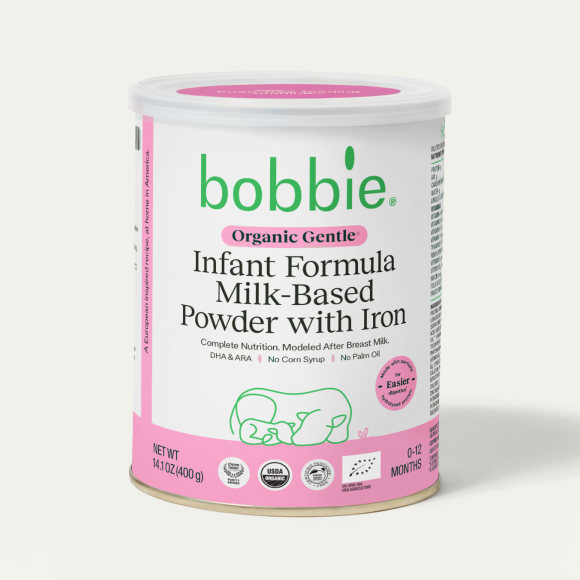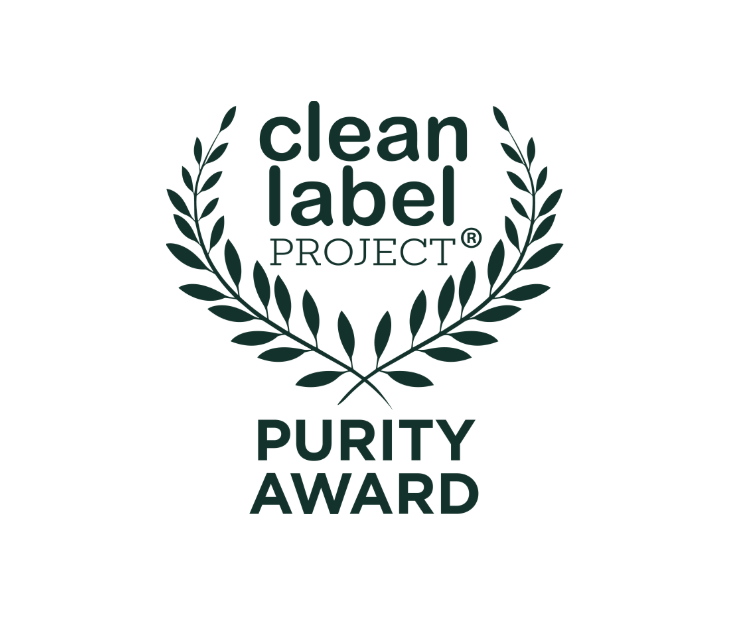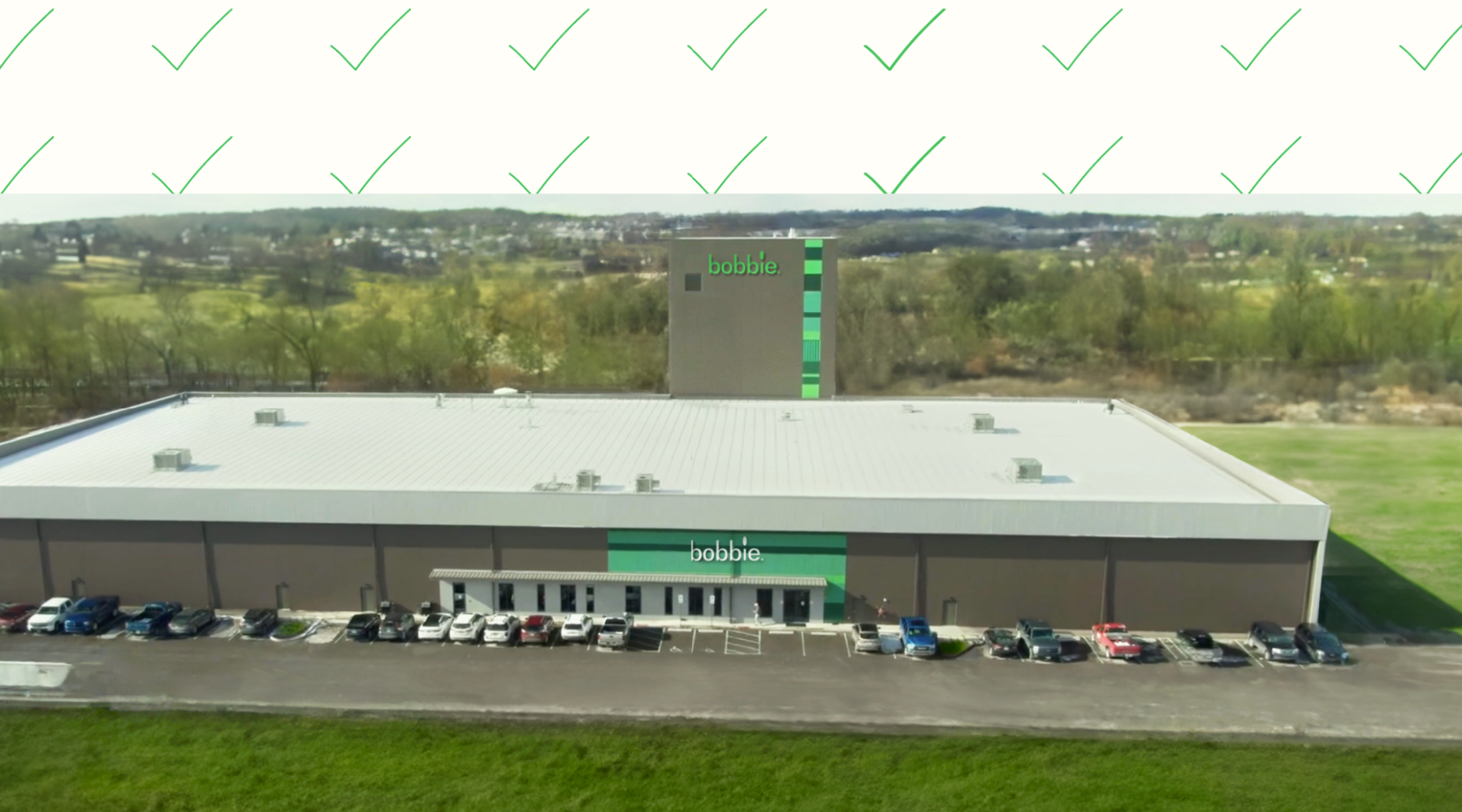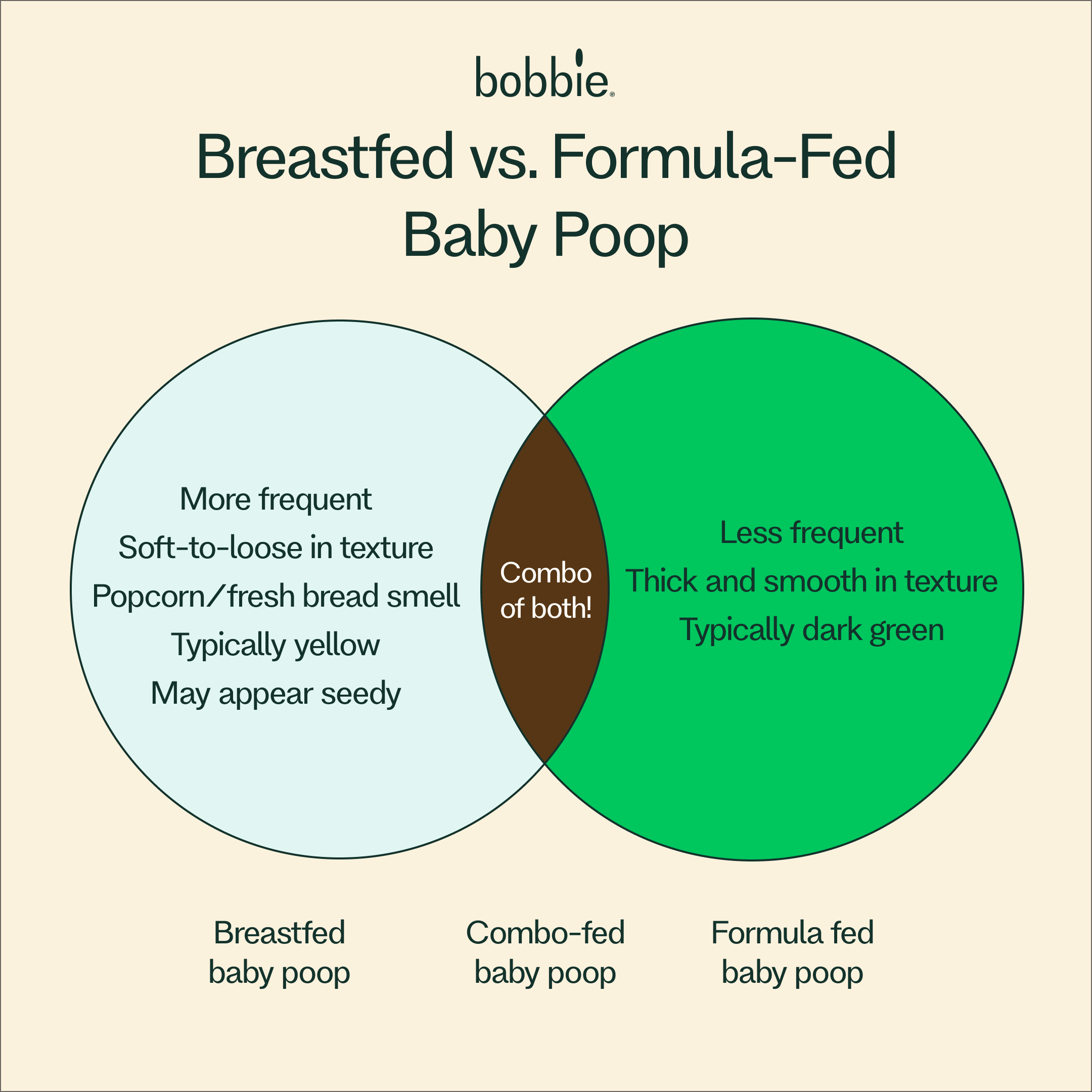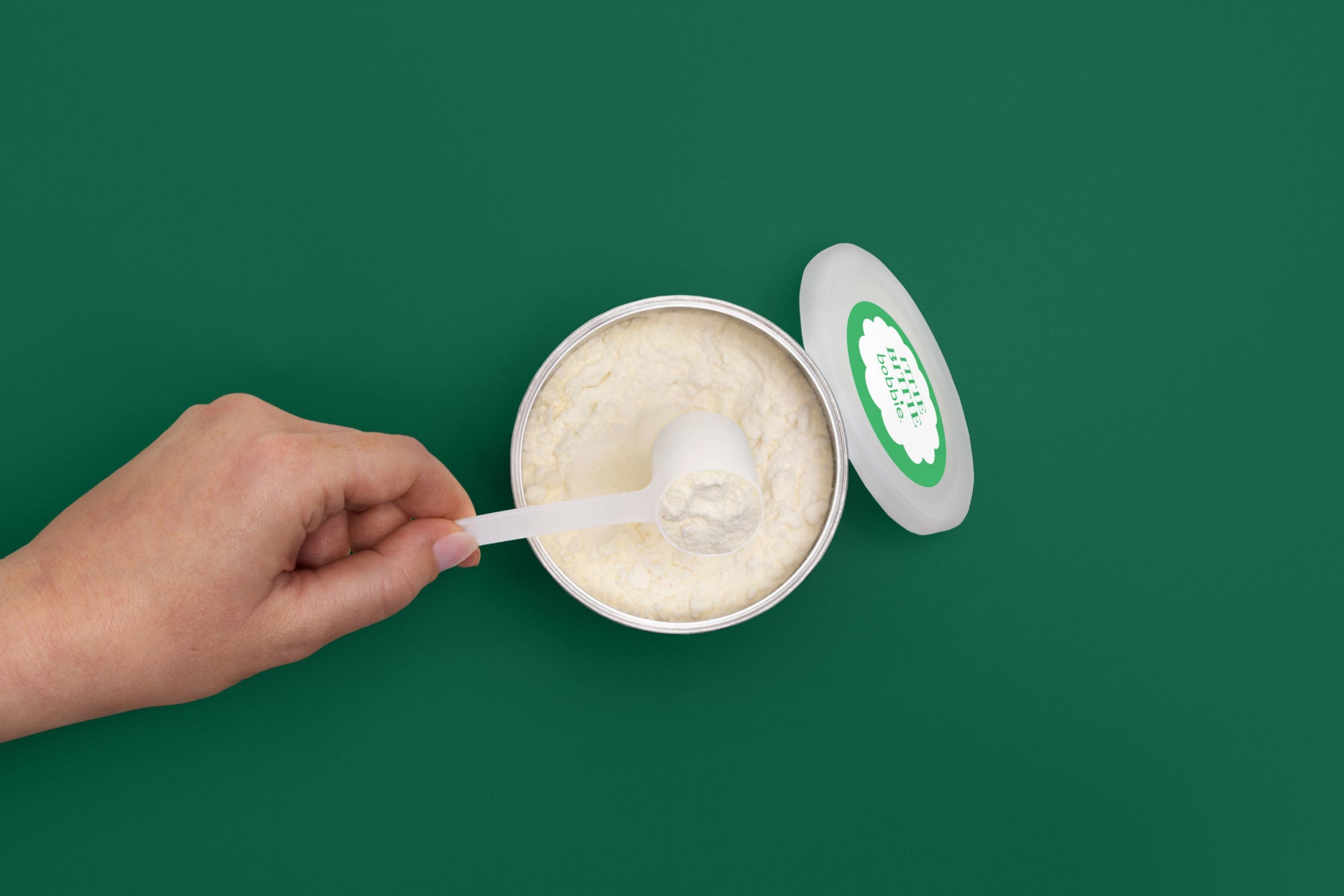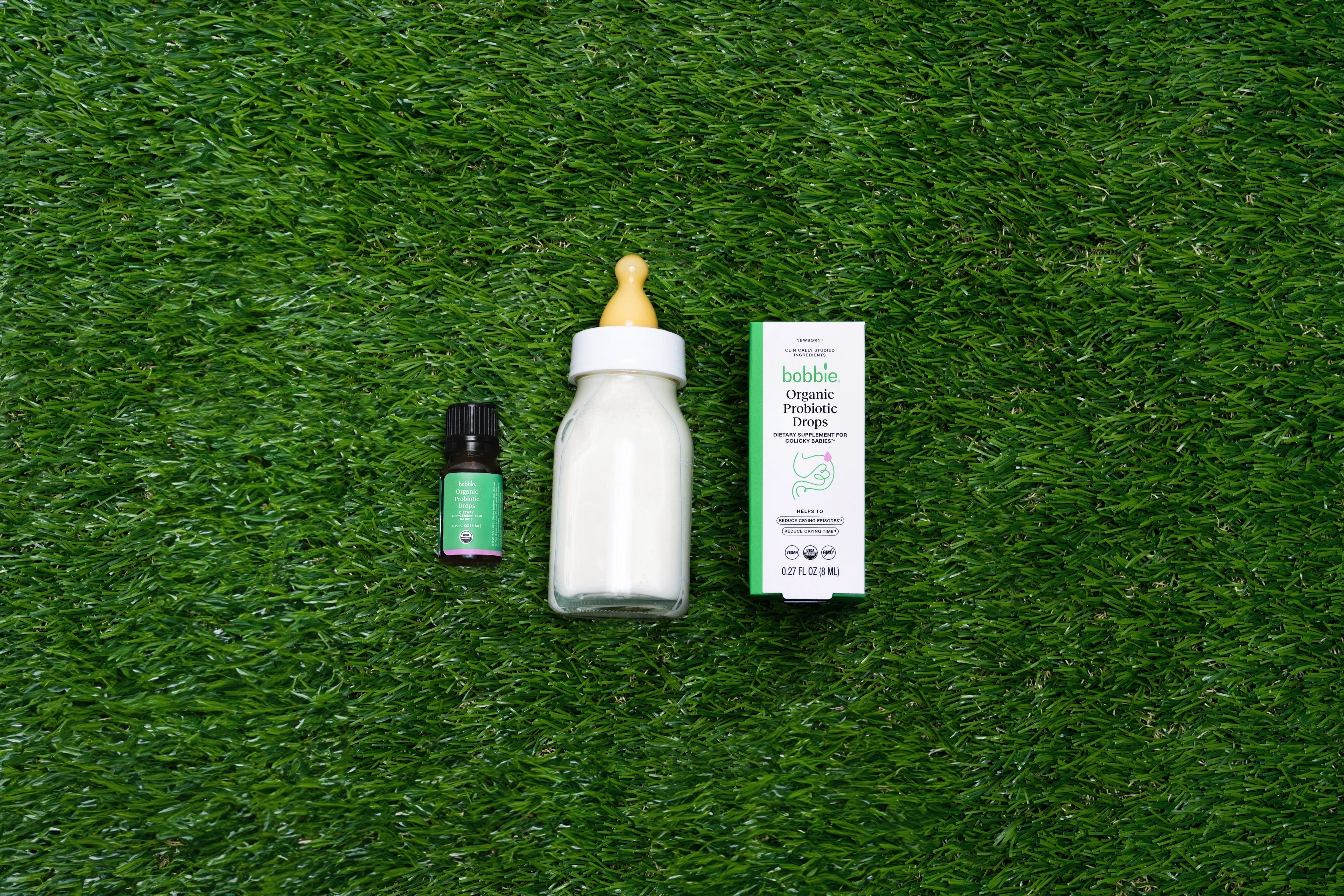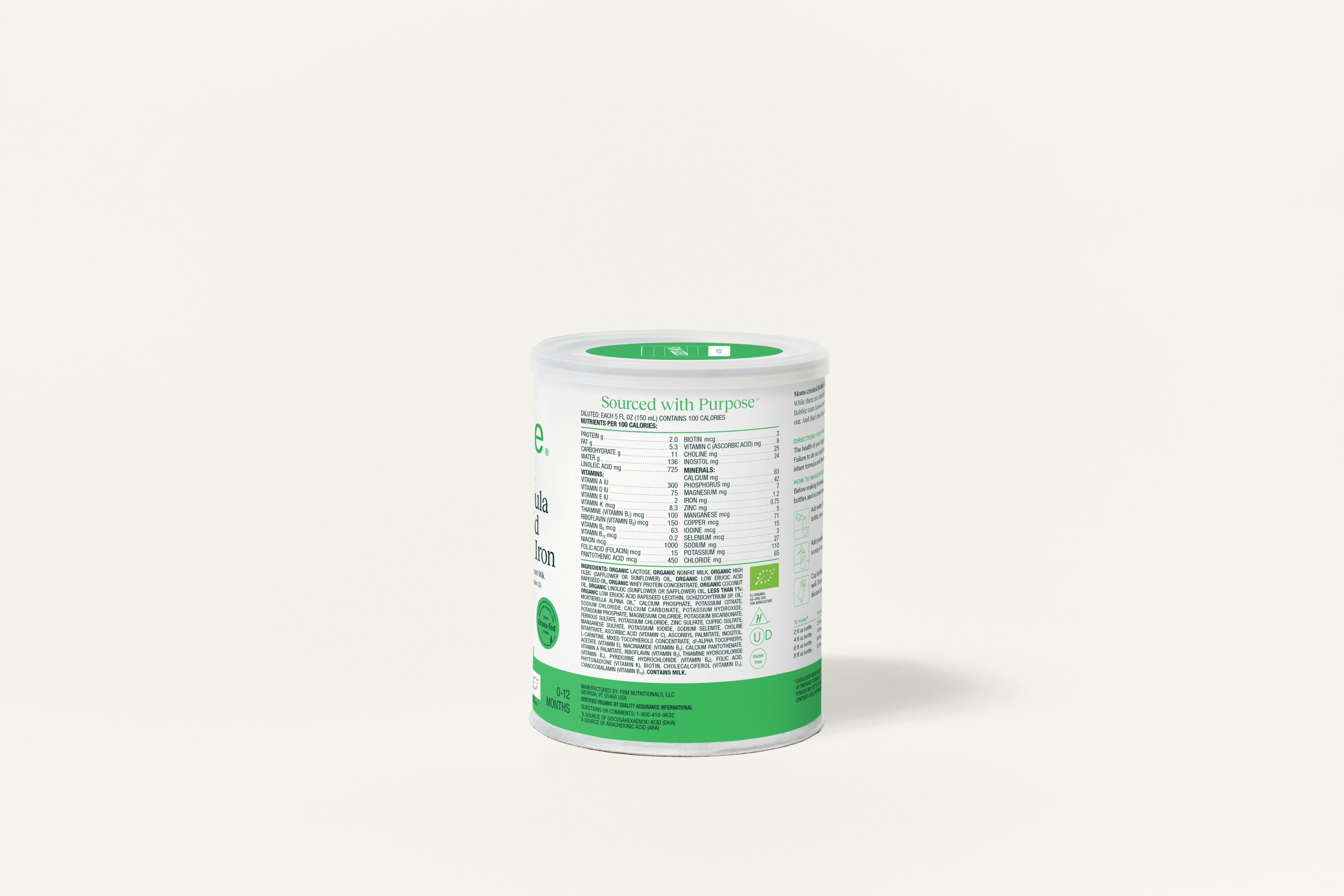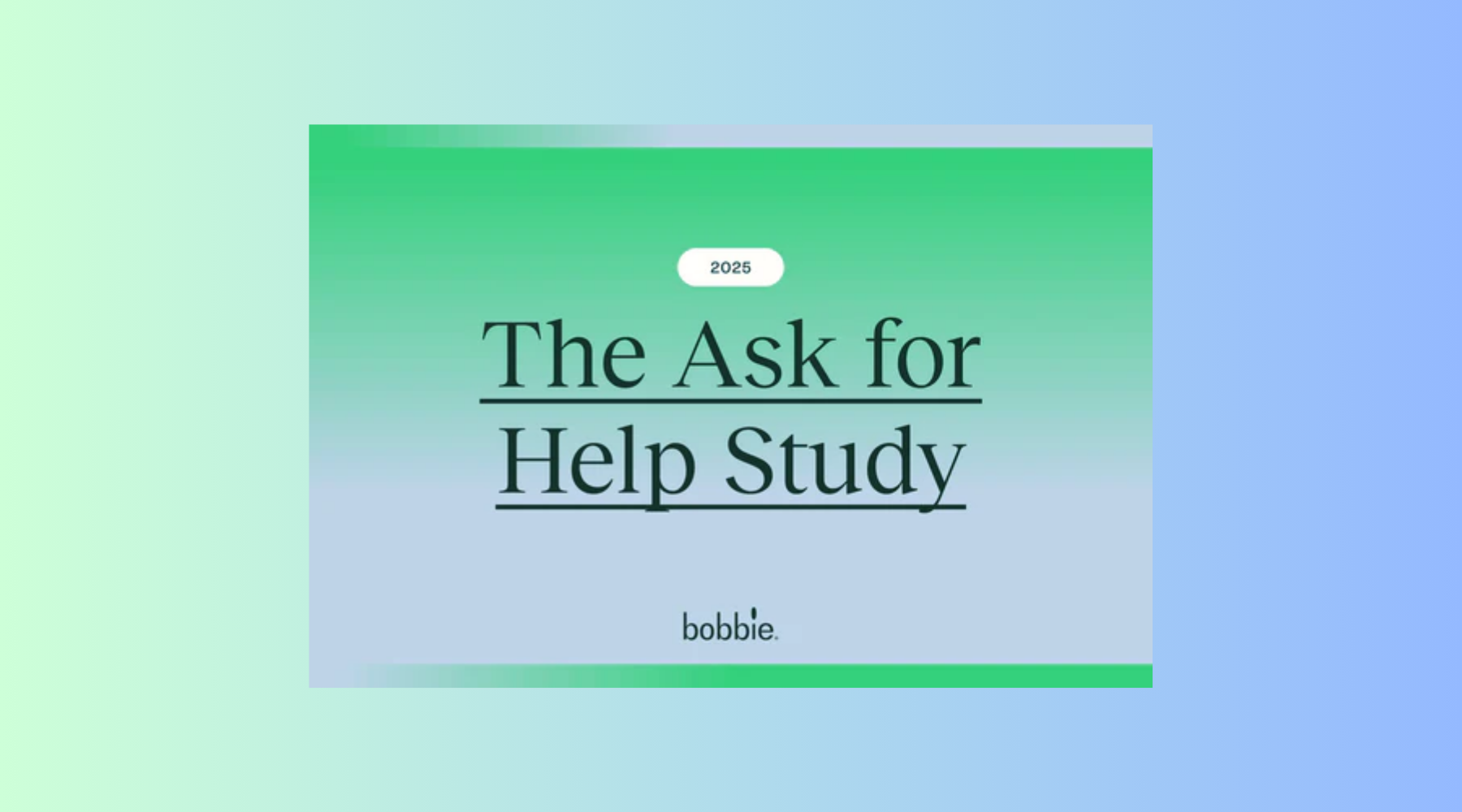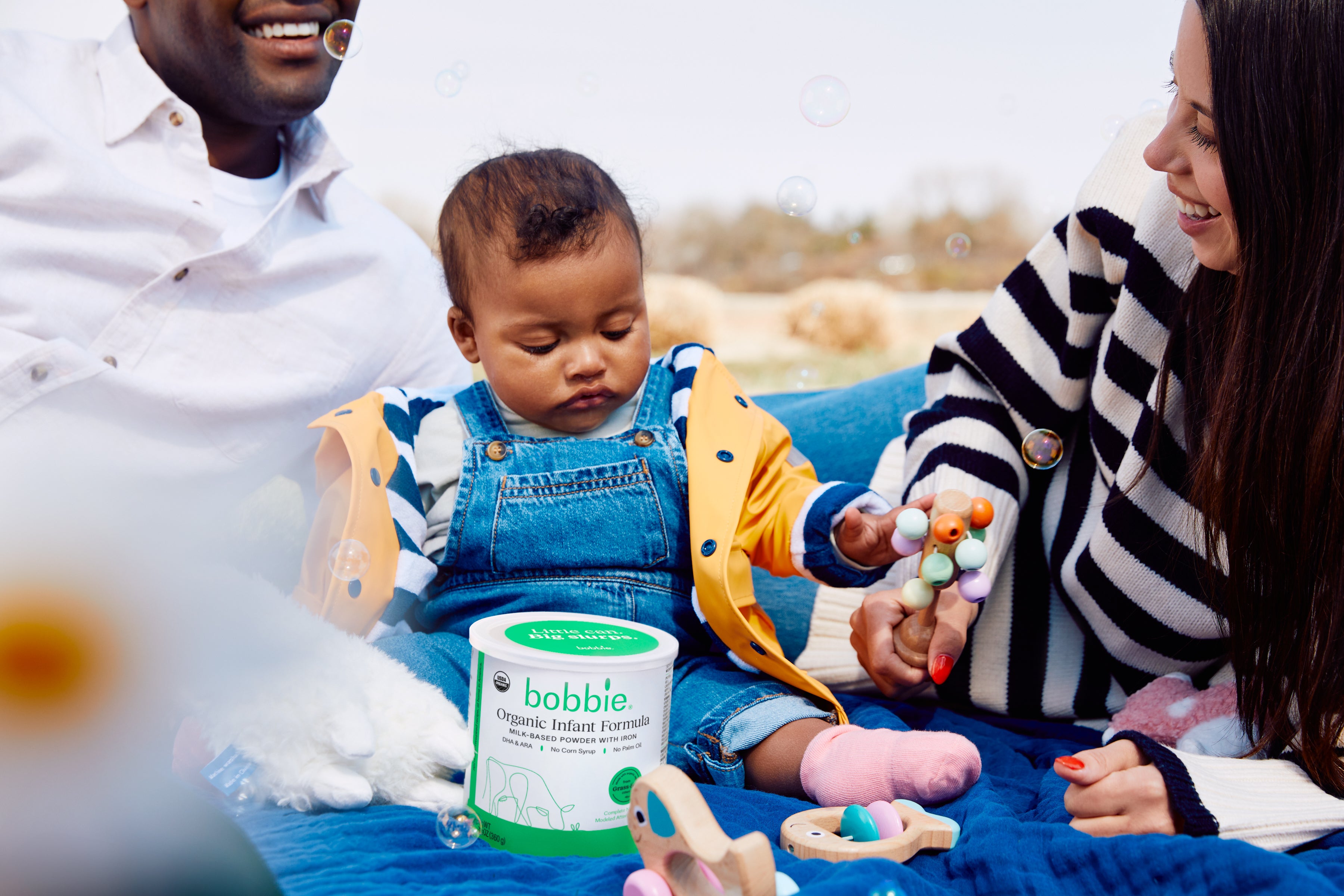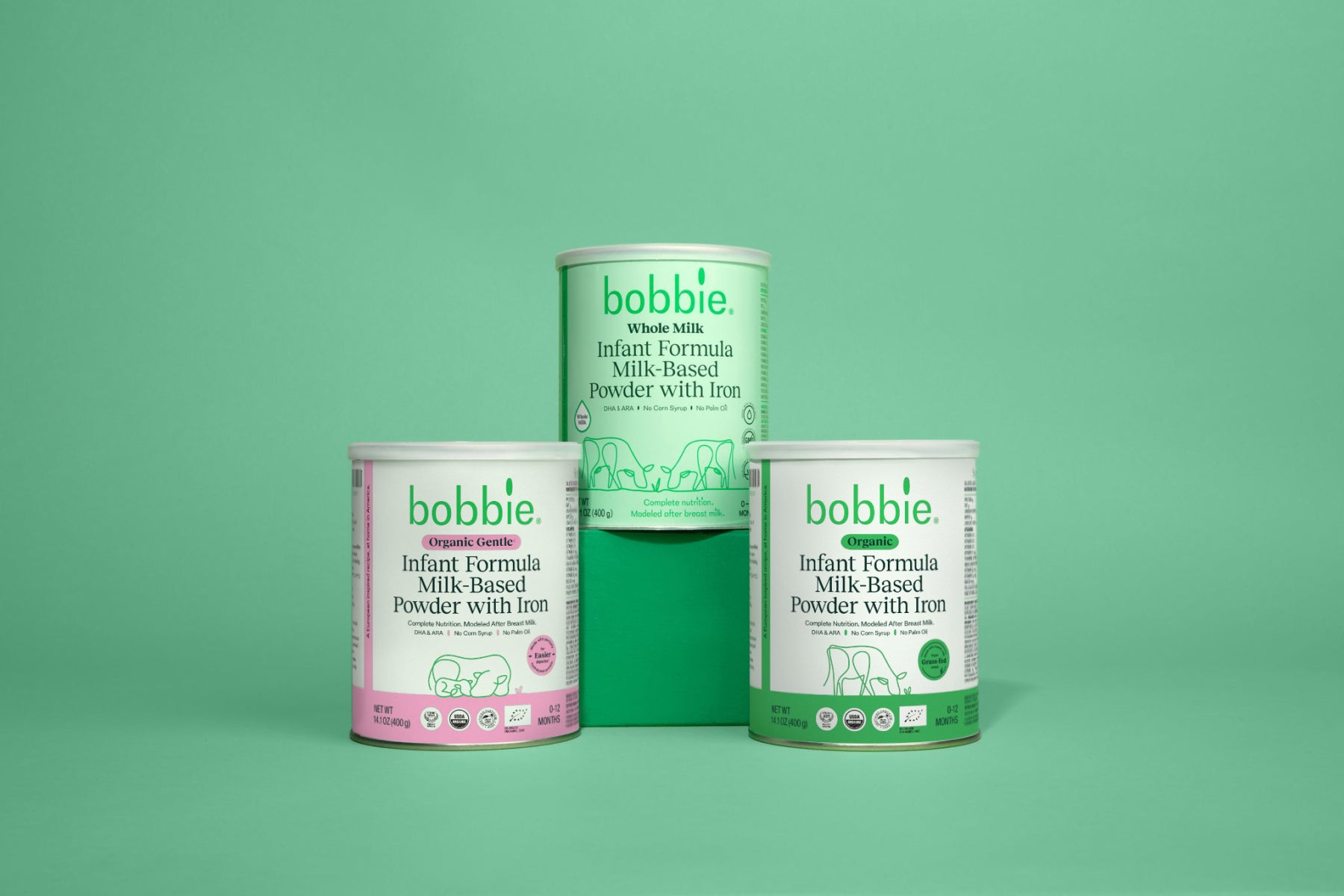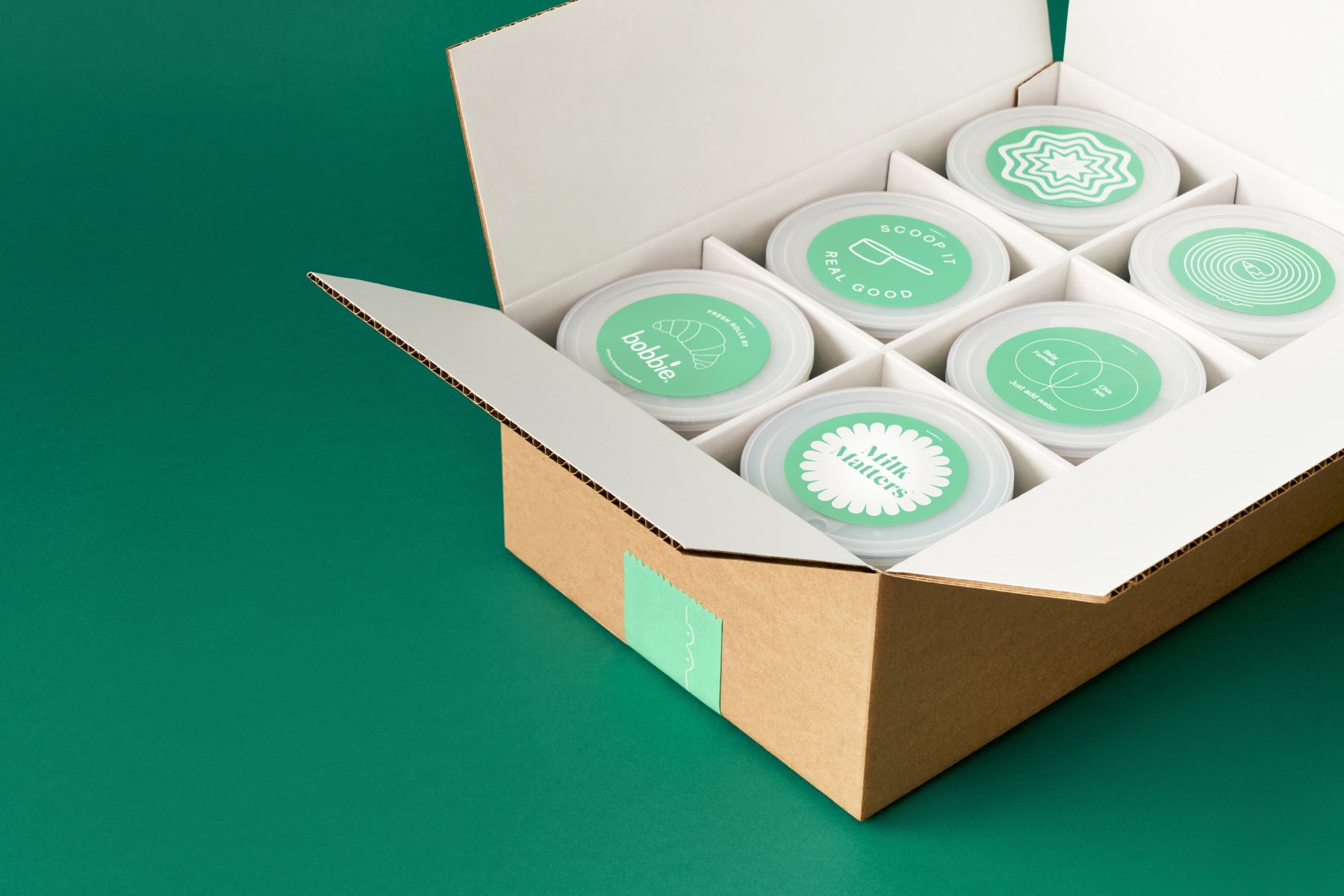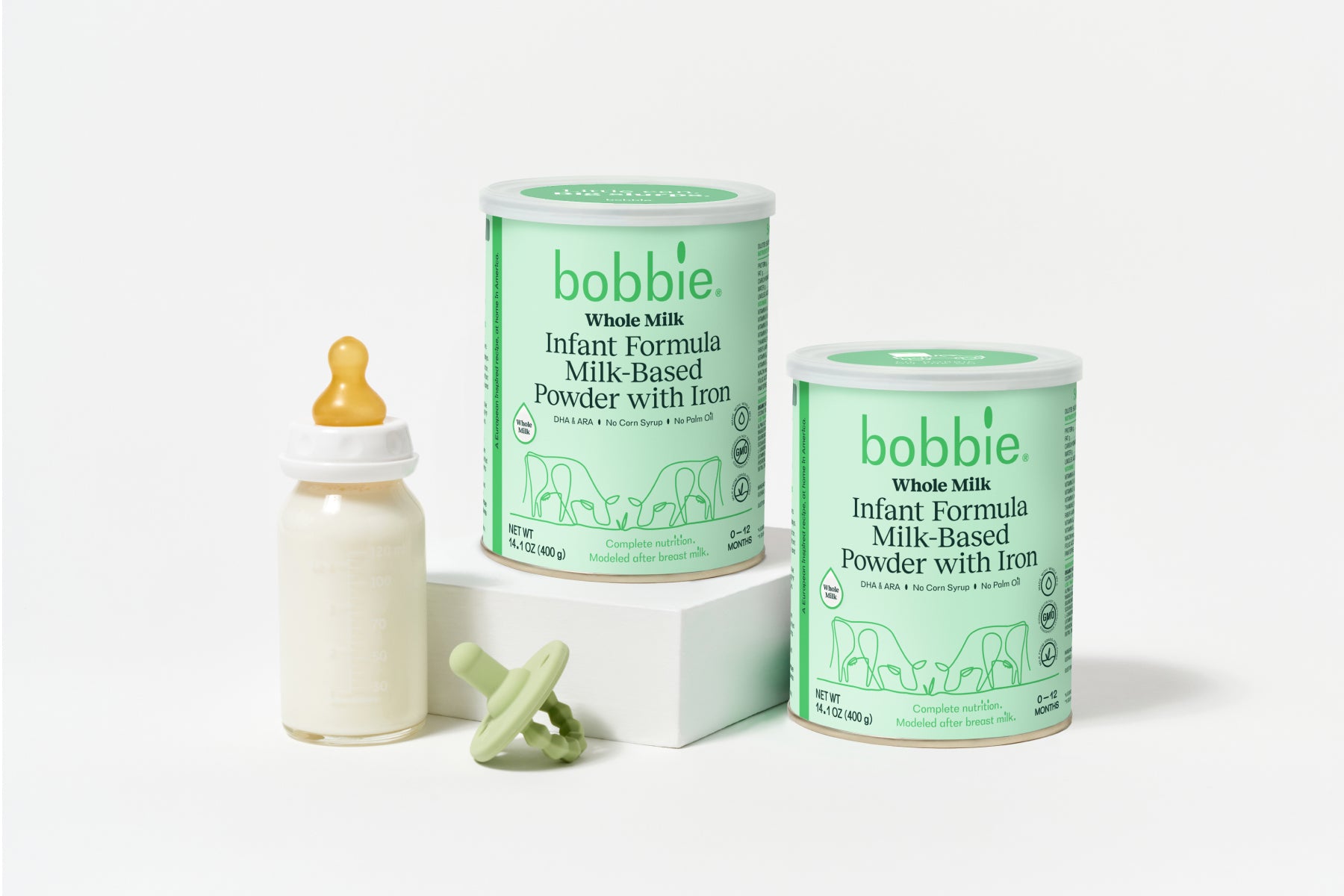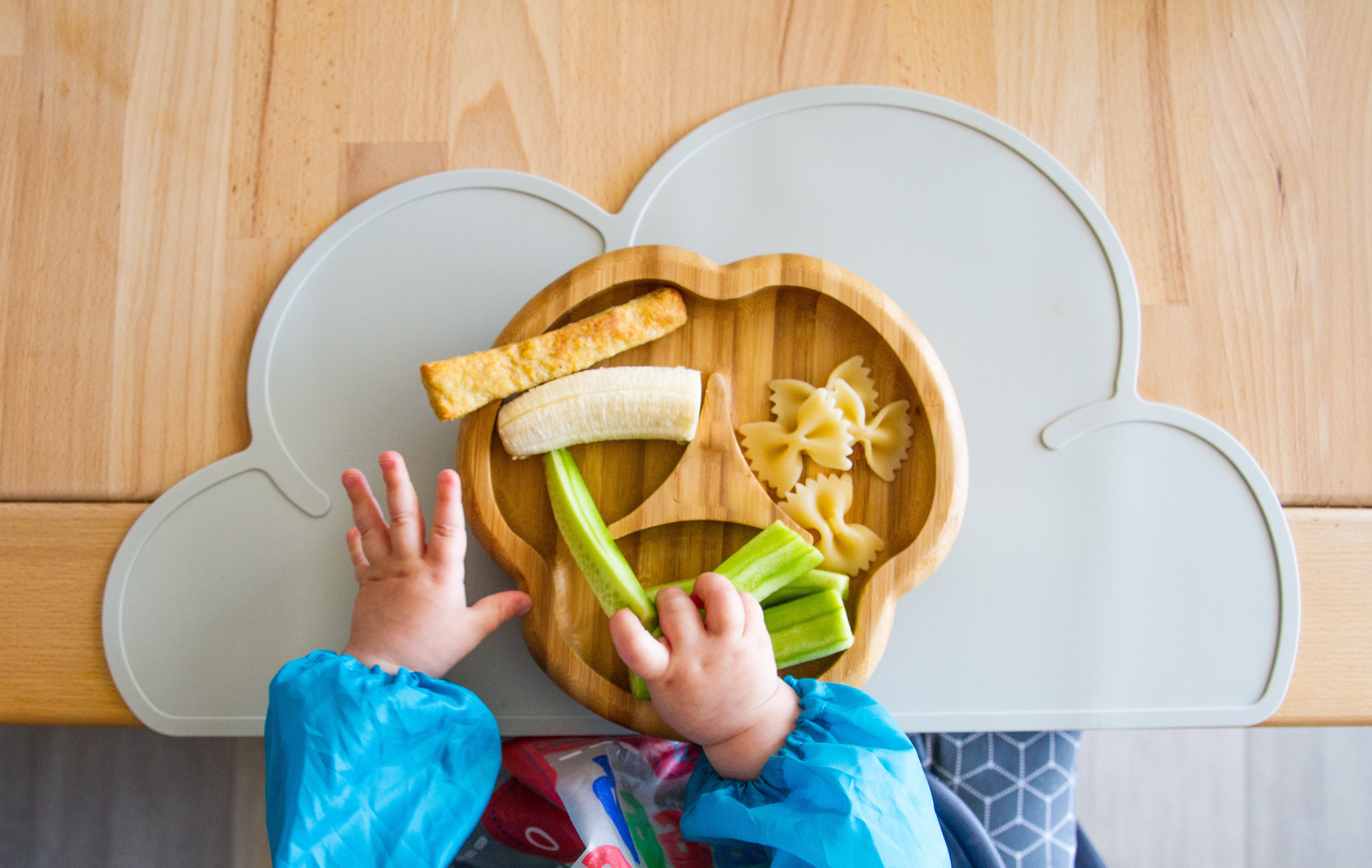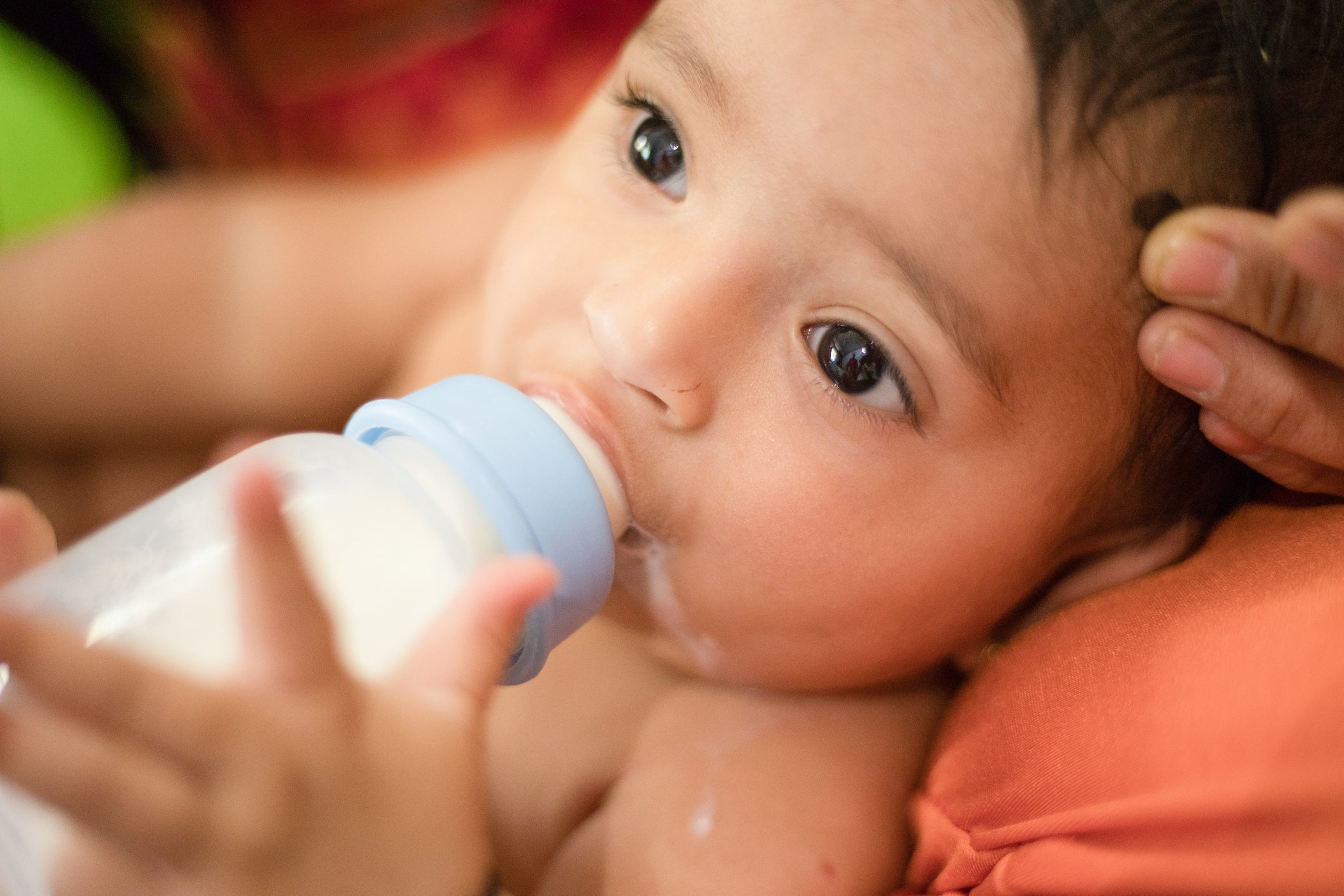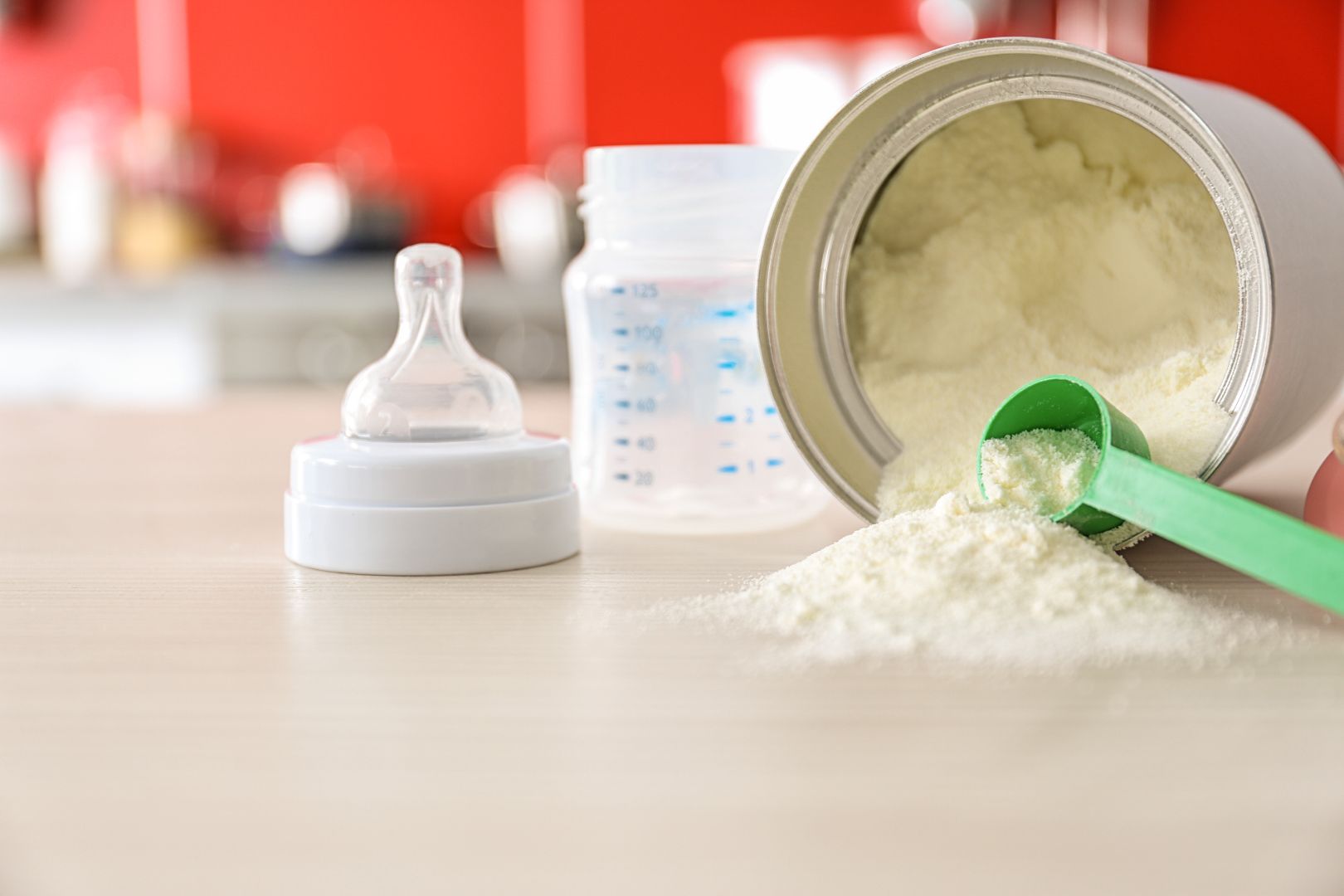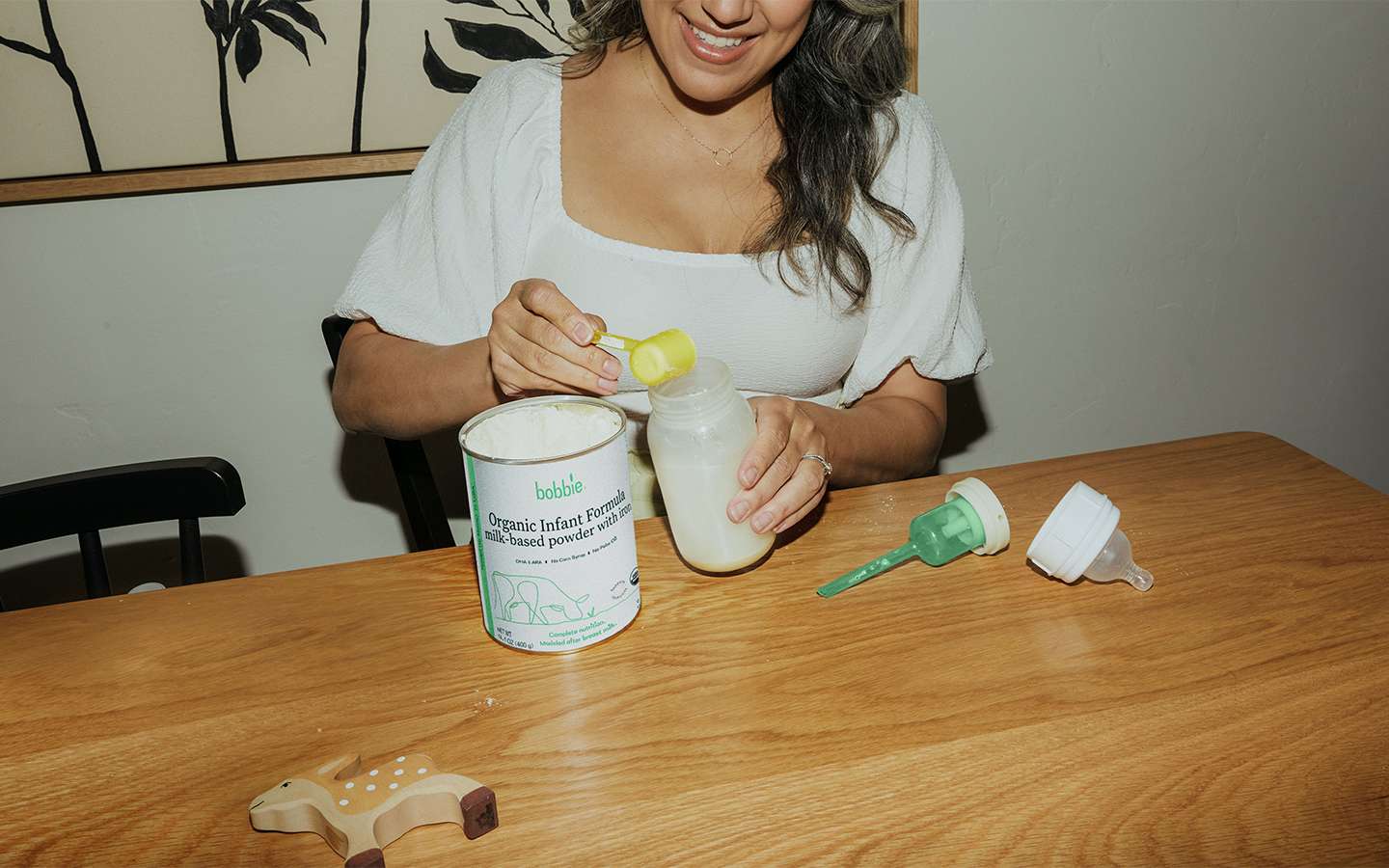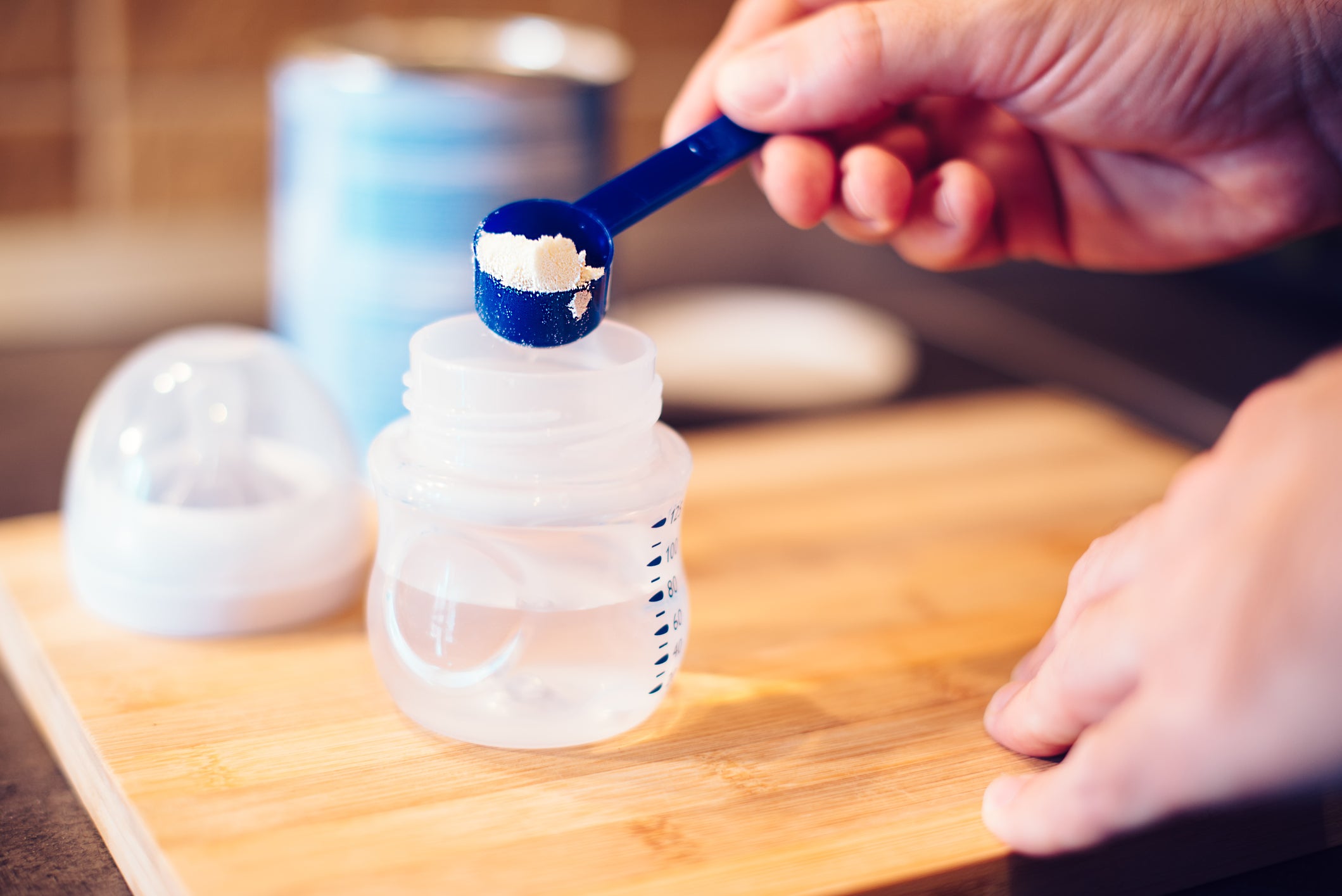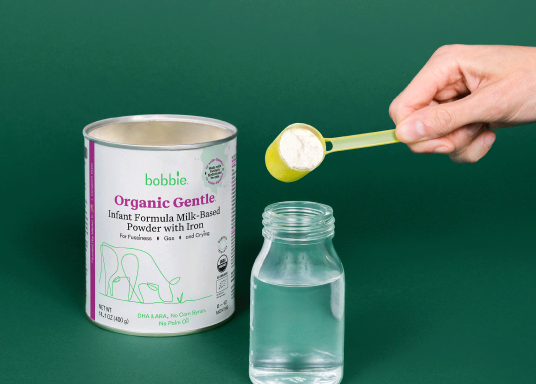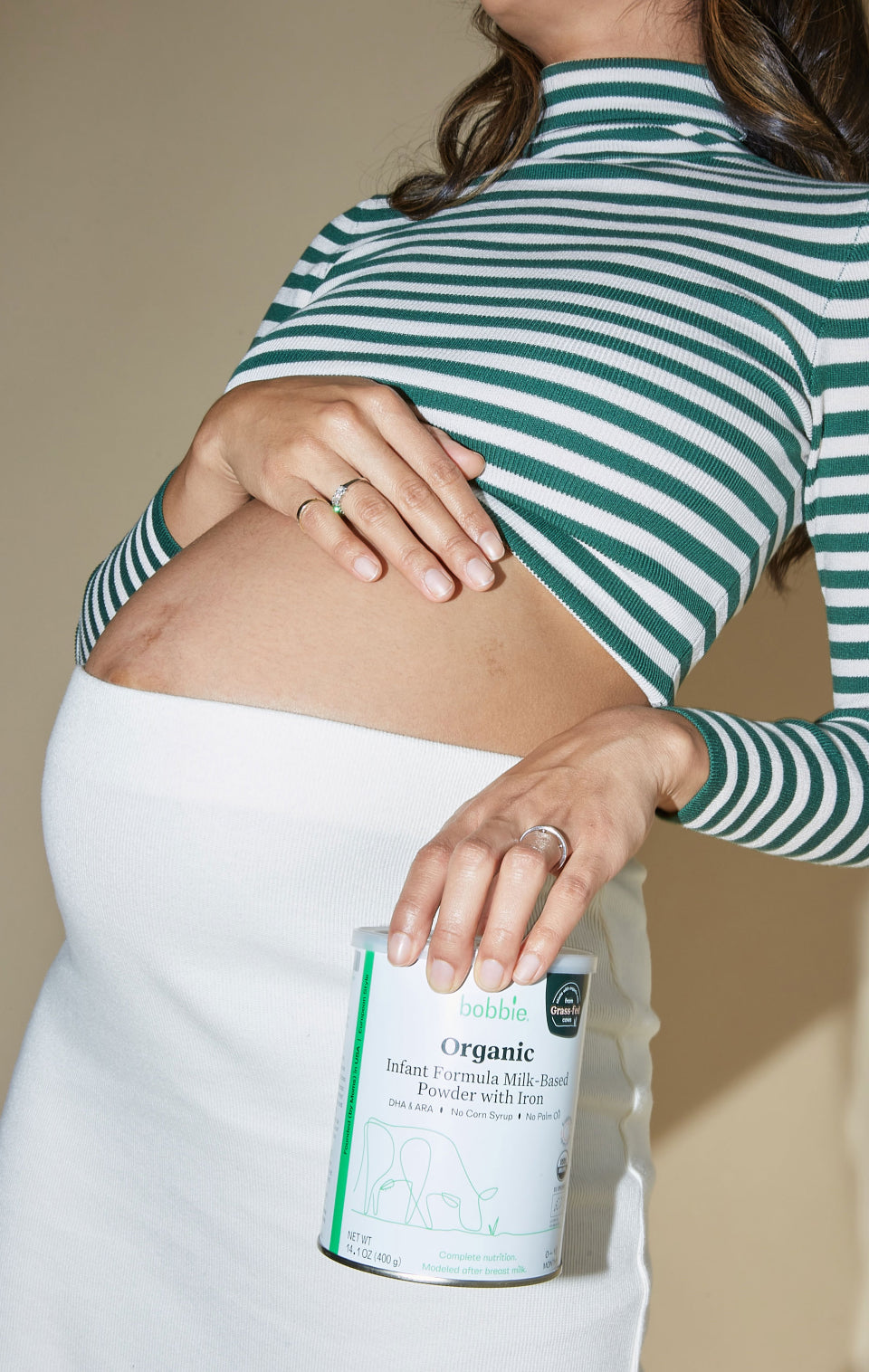Published May 3, 2024

Introducing a Bottle to a Breastfed Baby: When and How
Many breastfeeding parents choose to feed pumped breast milk and/or baby formula feed from a bottle at varying points, and learning how to do this correctly can feel overwhelming! When starting the bottle feeding journey, parents often wonder, “When should you introduce a bottle to a breastfed baby?” and, “How do you introduce a bottle to a breastfed baby?”
Let’s break down the best way to offer a bottle to a breastfed baby.
Reasons You Might Introduce a Bottle
There are many reasons why parents may choose to introduce a bottle to their breastfed baby. Some of these reasons include:
- Sharing feedings with your partner
- Returning to work after parental leave
- Traveling or being away from your baby for a longer period of time
If you’re going to be away from your baby for longer than 3 hours for any reason, he or she will need to be able to take a bottle when it is time to eat. It is good to consider whether you have plans during your baby’s first year that will require you to be away; if so, it is crucial to introduce a bottle and practice with it regularly!
And remember, milk production works on a supply and demand model– if the lactating parent wants to continue to breastfeed, milk should be produced by pumping or hand expressing any time a bottle is offered to replace a feed at the breast. Expressing milk frequently is what keeps milk supply strong, whether or not baby is around!
When to Introduce a Bottle to Your Breastfed Baby
Most health agencies recommend that parents wait to introduce a bottle until breastfeeding is established, typically between 3-6 weeks after birth. If you want to start earlier, talk to your healthcare provider or lactation professional. One thing you don’t need to worry about? Nipple Confusion! Nipple confusion is the idea that once a silicone or latex nipple is introduced that babies will “forget” how to feed correctly at the breast. Research shows that artificial nipples (bottle or pacifier) don’t have a negative effect on breastfeeding duration.
The best time of day to introduce a bottle is often the first feed of the day. In the morning, your baby may be hungrier and more motivated to eat, and they will likely take to the bottle easier. It may be harder to introduce a bottle during a naptime or bedtime feed if nursing is part of the usual going-to-sleep routine. If you want to avoid bottle refusal, it’s important to offer a bottle on a consistent basis (even just one feed a day). Keeping the timing of the bottle the same each day is a good place to start, though varying the location, timing, and person feeding each bottle is a good practice to get into after bottle feeding is well established.
How to Bottle Feed a Baby
When bottle feeding your baby, start with a slow-flow nipple– especially in the beginning. Did you know that nipple flow sizes aren’t standardized across brands, and that age ranges for nipple flow sizes aren’t evidence-based? Always start with a size 0 or 1 nipple flow, and look for a nipple that doesn’t drip when the bottle is turned over. We want the baby to have to pull the milk from the nipple, not gravity!
The best bottles for breastfed babies have a sloped nipple to allow for a proper, wide latch that’s similar to a latch on the breast. Many bottles that are advertised as being “closer to the breast” or “breast shaped” are actually less ideal as there is not a flared base at the bottom of the nipple to promote a wide latch. A gradually sloped or flared nipple (envision a triangle that gets wider at the base!) is a better choice than a nipple that is curved at the bottom with a small narrow teat on top.
When it’s time to start the feeding, technique matters! Be sure to use responsive feeding techniques (also known as paced feeding strategies) to mirror the experience of nursing as much as possible. You can do this by:
- Keeping baby relatively upright
- Alternating arms to hold the baby during each feed
- Allowing baby to latch on to the bottle versus sticking the bottle directly into the mouth
- Not forcing your baby to finish the bottle
Following responsive feeding techniques helps to reduce the likelihood that your baby ends up preferring the bottle due to the faster flow and ease of feeding. If you want to continue your breastfeeding journey, it’s important to use these techniques to more closely mimic the experience of feeding at the breast.
Sign up to get the scoop on feeding, sleep, poop, and so much more. By singing up for email, you are to receive marketing emails from Bobbie and can manage your email preferences or unsubscribe at anytime

Your go-to resource for all things new baby.
What if My Baby is Refusing a Bottle?
Here are a few strategies you can try if your baby is struggling with bottle refusal:
- Use a bottle warmer or plop the bottle in a bowl of warm water to warm the milk to body temperature– after all, a nursing baby is used to drinking warm milk.
- Have your partner or another caregiver do the bottle feeds (the lactating parent should be out of sight and smell distance).
- Try offering the bottle at different times of day, especially at a time your baby isn’t relying on a routine.
- Stay consistent with your bottle choice– try to avoid switching bottles, nipples, nipple flow rates, or formula to find “the right one.” Consistency is key here!
- If using formula, mix a small amount with expressed milk to help baby acclimate to the taste (with an important note that once breast milk is mixed with formula, it must be used according to formula storage guidelines)
- Don’t pressure your baby to eat if they’re showing signs of disinterest– lips tightly closed, turning head away, arching their back, etc. Sustained pressure can turn occasional bottle refusal into long-term bottle aversion.
- If bottle refusal continues, work with a lactation consultant and/or a speech-language pathologist that focuses on infant feeding and bottle feeding.
You Can Do It!
Bottle feeding is a great way to offer expressed milk or formula to a breastfed baby when the lactating parent isn’t able to or doesn’t want to nurse. Introducing a bottle early can help prevent bottle refusal down the line. Just remember to keep consistent without putting too much pressure on your baby or yourself. Use responsive feeding techniques to best mimic feeding at the breast in order to avoid bottle preference. Lastly, please reach out to a lactation consultant or pediatrician if you or your baby are struggling with feeding, including feeding from a bottle.
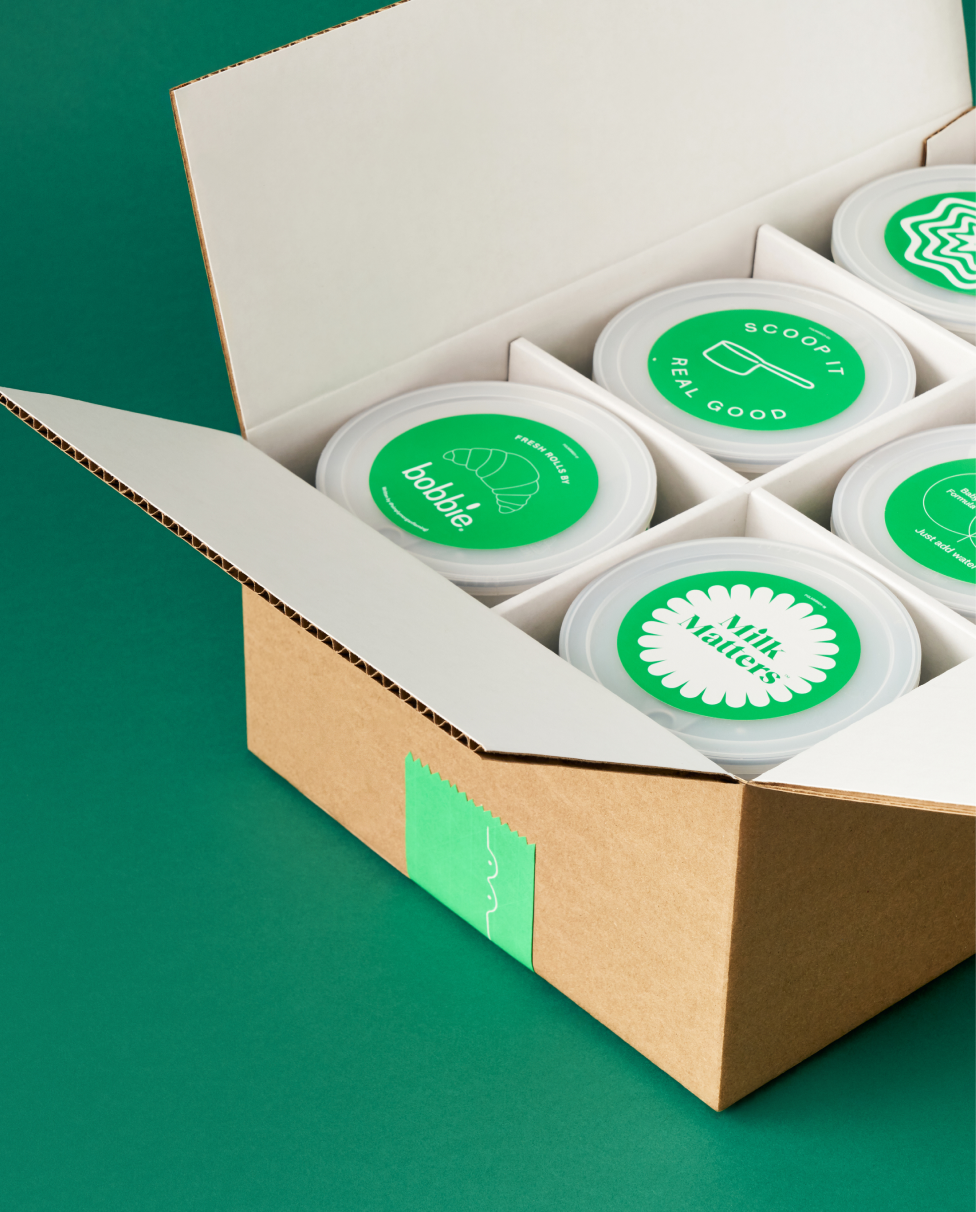
Shop Bobbie Organic Infant Formula
Bobbie Organic Infant Formula is a USDA Organic, EU-style infant formula that meets all FDA requirements. It is a complete nutrition milk-based powder modeled after breast milk and is easy on tummies. It is non-GMO and doesn't have corn syrup, palm oil, or maltodextrin. Shop Bobbie today!

The content on this site is for informational purposes only and not intended to be a substitute for professional medical advice, diagnosis or treatment. Discuss any health or feeding concerns with your infant’s pediatrician. Never disregard professional medical advice or delay it based on the content on this page.








